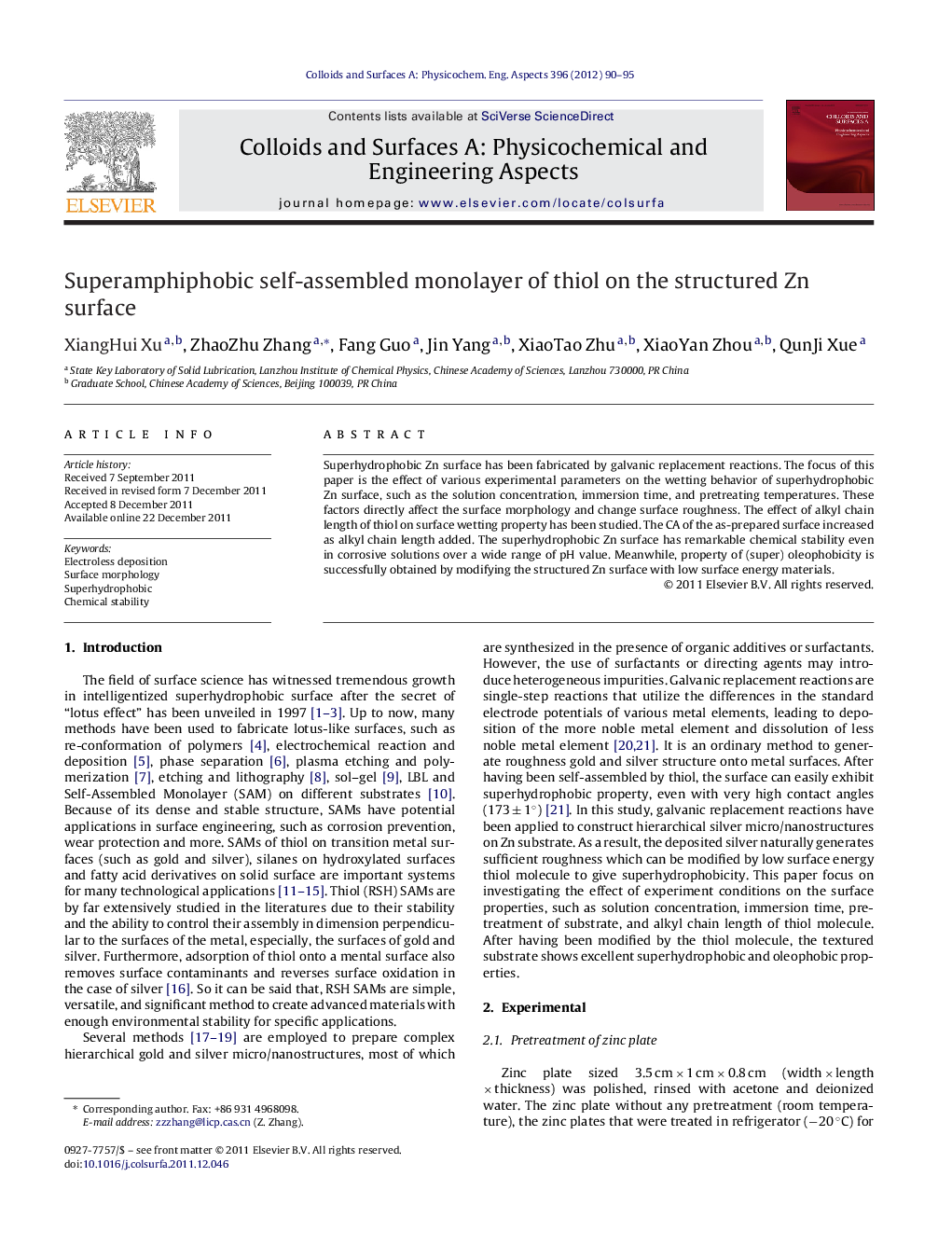| Article ID | Journal | Published Year | Pages | File Type |
|---|---|---|---|---|
| 594291 | Colloids and Surfaces A: Physicochemical and Engineering Aspects | 2012 | 6 Pages |
Superhydrophobic Zn surface has been fabricated by galvanic replacement reactions. The focus of this paper is the effect of various experimental parameters on the wetting behavior of superhydrophobic Zn surface, such as the solution concentration, immersion time, and pretreating temperatures. These factors directly affect the surface morphology and change surface roughness. The effect of alkyl chain length of thiol on surface wetting property has been studied. The CA of the as-prepared surface increased as alkyl chain length added. The superhydrophobic Zn surface has remarkable chemical stability even in corrosive solutions over a wide range of pH value. Meanwhile, property of (super) oleophobicity is successfully obtained by modifying the structured Zn surface with low surface energy materials.
Graphical abstractFigure optionsDownload full-size imageDownload as PowerPoint slideHighlights► The effects of experimental parameters on the wetting behavior of the superhydrophobic Zn surface have been investigated. ► The CA of the as-prepared surface increased as alkyl chain length of thiol adding. ► The resulting Zn surface has a remarkable chemical stability even in corrosive solutions over a wide pH range. ► The property of (super) oleophobicity is successfully obtained by modification with low surface energy materials.
